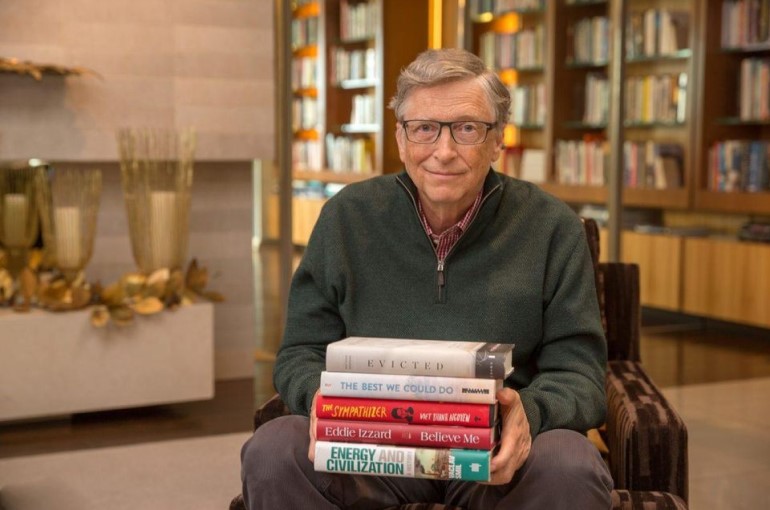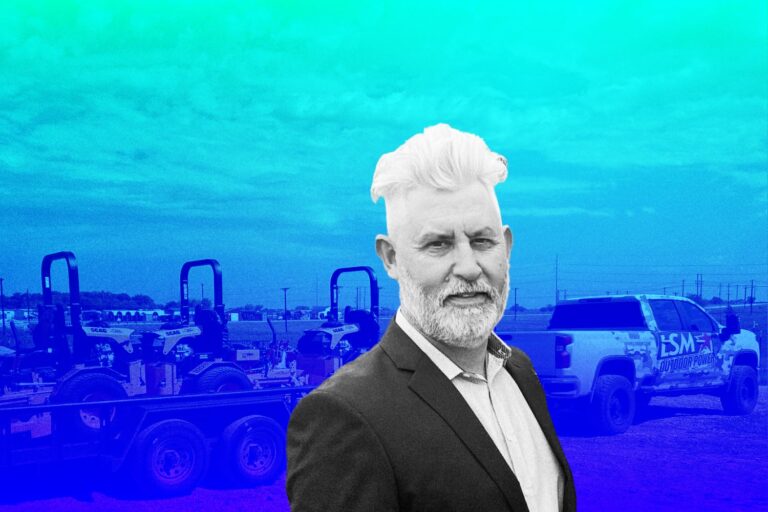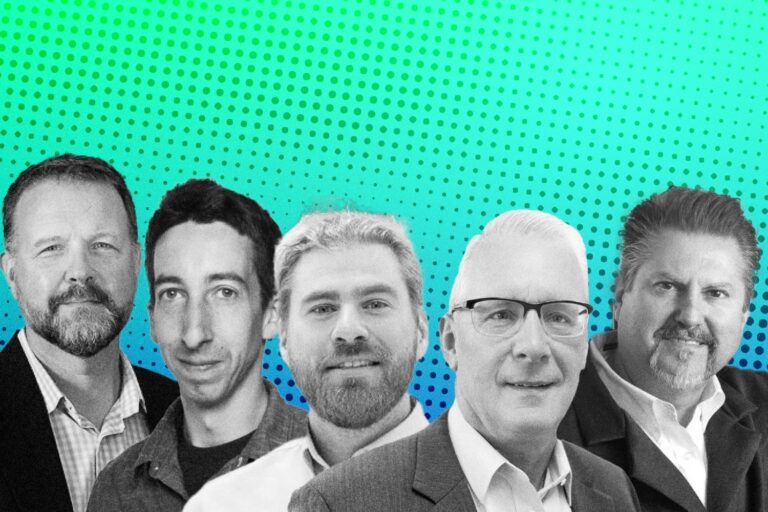5 Must-Read Business Books for Entrepreneurs Who Are Seeking Success
Warren Buffett – conceivably the most proficient investor – articulated that reading 500 pages a day was the key to settle on an effective strategy. Turning a concept into a disruptive company may seem like a challenging goal; yet many entrepreneurs do not have any hesitations to endeavour to achieve its zenith. They end up making a gargantuan task with colossal mistakes and floundering in financial debt. Before doing you must have a cunning plan, both in mind and written on a piece of paper. Assess risk and competitive advantage, hire the skilled employees, and decide on a budget. An easier way of starting a business is to gather more knowledge and motivation.
That is probably why so many successful entrepreneurs make reading as a daily ritual. It is why Bill Gates reads 50 books every year (about one per week) and perhaps why Mark Zuckerberg kicked off 2015 with the goal of reading one every other week.
If you want to broaden your horizons with new concepts, fruitful business models, and an aggregate of diverse knowledge and contrarian premises about the prospects of the future, then reading is a key. It is going to assist you in business, be it by a mixture of professional advice on how to make that leap from a corporate failure to corporate success and helpful lessons on lean start-ups and break-through innovation in fierce economic flow.
With plentiful business books out there to pick up, sifting through all those descriptions and reviews could take up an entire time. We figured you would rather spend that time – reading to acquire knowledge. Reading business and self-help books can illuminate the fastest path to success. Here are 5 masterpieces that will help you turn your plans into a productive business ecosystem, or a successful leader to build a truly remarkable organization. Let take a view on them.
1. “Think and Grow Rich” by Napoleon Hill

With plenty of fascinating books out there to illustrate you how to get rich, you will have to grapple with hundreds of ways to achieve affluence from step-by-step guidelines. In the end, you might be on the spot, or luckily you have been rich but not yet have satisfied insatiable appetite. Napoleon Hill has published the book “Think and Grow Rich” to outline laws of success and provocative guidances to get rich through his studies over 20 years, under the auspices of a multi-billionaire property tycoon Andrew Carnegie – then the richest man in the world. The author interviewed Henry Ford, William Jennings Bryan, George Eastman, John D. Rockefeller, Clarence Darrow, and other millionaires of his generation to discover and publish a blueprint for wealth that the average person could duplicate.
With over 30 million copies in print sold worldwide and translated into 10 languages, this entrepreneurial story by Napoleon Hill claims universal appeal regarded as personal development and self-improvement masterpiece. “Think and Grow Rich” does not accurately elaborate on how to get rich, the philosophy of this book revolves around “rich mindset” and conveys a message: In any effort, you can reach success and achieve financial freedom via mental visualization and imagination. To put it in simple cases, you can become anything that your mind deems possible; as a result, your mind becomes the one thing that can either frustrate your attempts or impel you to master the secret of true and lasting wealth. Today, it continues to influence our collective thought, and current literature and impactful teachings on success in any line of work.
Oliver Napoleon Hill (born October 26, 1883- November 8, 1970) was an American self-help author. He is known best for “Think and Grow Rich” which is ranked the sixth best-selling paperback business book by BusinessWeek magazine’s Best-Seller List. Most of his books were promoted as explicating principles to improve life quality. Additionally, he was also a former consultant of President Franklin D. Roosevelt from 1933 to 1936.
“Think and Grow Rich” 13 principles for success are summarised into the book’s most notable lessons. Hill posits that mindset is more conducive to success than any other feature, including money, education or specific knowledge about life. Mindset determines action and action determines the outcome of work. If you radiate positive energy, the result you get is motivating and constructive, and vice versa. This is the indisputable secret of the Law of gravity. Factly, our thinking spawns an energy that determines the either success or failure in line of work and identify the positive or negative thinking in human sentiments.
Failure is also considered as a prerequisite part of the growing process, but it helps us get closer to the final goal if we leverage it properly and decide to persevere nevertheless, whatever that might show up on our journey. Failure will come to those who are nonchalant and indulge themselves with thought of failure. Indeed, you will fail if you do not pay attention to your own thoughts, do not focus on the devised career goals of and incline to surrender to failure.
Positive thinking will provide you with needed strength to embrace adversities and frustrations with audacity and bounce back as a confident person. Certainly, it has enough potential to motivate you to desire to achieve the highest result in your work and help you in setting scores with the obstacle-induced situations or factors. Let those thoughts go deep into your subconscious mind. That is the way you get the mind of a successful person. Success is a journey and it starts from successful thinking.
2. “The 4-Hour Workweek: Escape 9-5, Live Anywhere, and Join the New Rich” by Tim Ferris

The 8-hour workday, the 5-day workweek is the prevalent work schedule for both blue-collar and white-collar workers across the globe. When it comes to their work, most people grumble that they are very busy and do not have time to do anything. You think that you should plunge into work and you could earn a high-income livelihood, but you forget to look back at your life. Life is not only a work but it also a health exercise to outlast the stamina, a family care to share empathy, a friend meeting to feel comfortable and more. In a frantic world, a search for silver bullets to get away from over-time hard work and to enlighten the fastest path to success that is promising the masses a way out. “The 4-Hour Workweek: Escape 9-5, Live Anywhere”, and Join the New Rich, by Tim Ferris, is one of silver bullets that you must amass and perceive the principles outlined.
The book has spent more than four years on The New York Times Best Seller List. “The 4-Hour Workweek” has been translated into 40 languages and has sold more than 2.1 million copies in print worldwide. The book has become a universal blockbuster in line of self-help piece, and it is a notable formula for a bunch of itinerant cognoscenties. Ferriss builded up the adaptive guidances written in “The 4-Hour Workweek” whilst he felt a sense of frustration by his workaholic lifestyle and lack of a relaxing time. Ferriss took a three-week sabbatical to Europe. During that time, Ferriss designed a streamlined system of checking email once per day and outsourcing small daily tasks to virtual assistants. His own experiences in escape from overwork and business automation was the provenance of the book.
“The 4-Hour Workweek” assists you to forget the perennial concept of retirement and to repudiate the traditional “deferred” life plan in which people work arduous hours and take few vacations for decades to rejuvenate and save money in order to enjoy the life after retirement. In non-stationary economic times, there is no need to wait for liberating from the grueling rat race, experiencing high-end globe-trotting, or earning a monthly high income with unregulated time.
Additionally, the book will suggest you effective working methods to skyrocket your productivity in the shortest time, and help you get closer to an independently successful person who know how to balance between workload and relaxation.
With a four-step formula called DEAL: D – Definition, E: Elimination, A: Automation and L: Liberation, the book will give you the vital key to enter the world of NR (New Rich) – entrepreneurs who do whatever they want to do.
Never consider retirement as your end goal, then you fully adhere to a depressing job. If you do not have a predilection for what you have done during the healthy zenith of your life, those years would be completely pointless. Designing your luxury lifestyle does not mean creating too much cessation of your work, but it is exactly how you trade an interminable career for short work bursts and frequent “mini-retirements” and indulge yourself take more vacation to invigorate your energy and upgrade your global outlook without quitting your job.
3. “The 5 Dysfunctions of a Team” by Patrick Lencioni

A good teamwork structure provides your organization with a diversity of perspectives, breakthrough creativity, in-depth insights and problem-solving approaches. An effective team allows individuals to confidently voice their opinions and brainstorm ideas collectively, in turn enhancing their success to reach at solutions more efficiently and creating a competitive edge to accomplish objectives. Sharing differing experiences can help make effective decisions faster, than when done alone. You can do the stages of discussing, planning, and implementation much more productively when a team is functioning well.
A collaborative team environment is a desirable dream that not only do the proletariats and clerical staff aspire to engage in, but it also is probable entrepreneurs’ prospects in order to streamline their team’s workflow process and optimize their performance. Notwithstanding, in a regular workplace environment, executing or working on a team in which infighting, a lack of accountability, or jockeying for position is literally norm. This is moderately typical of most organizations, and even though it is not easy to weed out those situations, it is completely possible to surmount. The dysfunctional behaviour is highly traceable roots and with a little developed paradigm shift, coordination and sharing, even the most discordant teams can row together in the boat of progress. So, “The 5 Dysfunctions of a Team” is an exclusive blueprint for anyone who want to embark on building an effective team and to know how to handle teamwork disharmony in workplace environment.
“The 5 Dysfunctions of a Team” is a business-improvement book by consultant and American author Patrick Lencioni. This book has been listed in the American best-selling lists including: The New York Times Best Seller List, Business Week, Wall Street Journal and USA Today.
In this book, Patrick Lencioni once again portrays a leadership allegory that is as enchanting and constructive as his first two best-selling books, The Five Temptations of a CEO and The Four Obsessions of an Extraordinary Executive. He tells an intriguing story of a technology firm that is endeavouring to grow and navigate targeted customers. The new CEO on board, Kathryn Petersen, discern the effect of the organizational health and its internal labour productivity. However, the executives are not working together as a team and thus threaten to bring down the entire company the entire organization. The group grapples with embracing accountability and concluding any agreements, leading to negative morale.
Throughout the story, Lencioni unveils five dysfunctions which go to the core of why teams even the best ones-often struggle. These dysfunctions include absence of trust, fear of conflict, lack of commitment, avoidance of accountability and inattention to results. Throughout the story, Lencioni unveils five dysfunctions which go to the core of why teams even the best ones – often struggle. He draws an impactful model and actionable steps that can be used to conquer these prevailing impediments and build a cohesive team.
4. “Zero to One: Notes on Startups, or How to Build the Future” by Peter Thiel

There is a common fallacy that the hardest part of entrepreneurship is turning your product into an emblem of customer insight that will soar into the stratosphere. That stage in the journey is known as going from “one to 10”. You have proven your product-market fit and now it’s time to invest on your business monopoly, whilst rethinking and reinventing strategies in order to make break-through leaps and maintain sustainable in volatile business landscape.
But, before start-ups adopt a global mentality, entrepreneurs must first go from “zero to one”. This is the first, and the most challenging stage in building a company. To help a business grasp the powerful “zero to one” concept, PayPal co-founder and investor Peter Thiel has co-written with Blake Masters a “Zero to One: Notes on Startups, or How to Build the Future” book published in 2014.
Scantily 200 pages written, and well illuminated by explicit prose and laconic proverbs, this book is a perfect pamphlet and a thought-provoking guidance for entrepreneurs, thriving with the prospect of remarkable innovation and monopoly that only start-ups can dominate. Thiel lucidly articulates with the startling premise that an age of technological stagnation is taking over cutting-edge advancement of technology-based assistants, even if you are too diverted by mobile devices to discern. Information technology has improved dramatically, however, there is no reason why progress should be limited to technology and innovation. Progress can be attained in any industry or area of business. It comes from the most vital skill that every leader must grasp – learning to think for yourself.
Replicating what someone else already knows how to do takes the world from 1 to N (horizontal progress), adding more of something familiar. But every time you inaugurate something new, you make that leap from 0 to 1 (vertical progress). The act of innovation is to achieve monopoly profits and inculcate the sense of market equilibrium, as is the moment of take a new venture, and the entrepreneurial path is new and untried. Thiel pithily concludes about: “Successful people find value in unexpected places, and they do this by thinking about business from first principles instead of formulas.” In a world of erratic shift, business conquerors will not reach their apogee by competing ruthlessly in capricious marketplace. They will escape competition altogether, because their businesses will earn a monopoly by solving a unique problem.
“Zero to One” manifests a relentless provocative polemic against stagnation, convention and uninspired thinking and help beginning entrepreneurs see beyond the formulas laid down by settled frameworks to broader future of progress in America. This book also helps aspiring start-ups recognize the importance of a way of thinking about innovation and of seeking a thoughtful alternative to the current pervasive gloom.
5. “Emotional Intelligence: Why It Can Matter More Than IQ” by Daniel Goleman

Emotional intelligence (otherwise known as emotional quotient or EQ) is the the ability to manipulate your own emotions in positive ways and apprehend those of people around you, to distinguish emotional shift, and to use emotional information to thinking and behavior. People with a high degree of emotional intelligence know what they are feeling, what their emotions mean, and how these emotions can affect other people.
Emotional intelligence is commonly defined by four proposed attributes: self-awareness, self-management, social awareness, and relationship management. These attributes are clearly discrete yet related. Emotional intelligence also illustrates abilities to engage social network, empathy and understanding of interpersonal dynamics.
Emotional intelligence helps you build stronger relationships, communicate effectively, succeed at school and work, and reach your career peak. It can also help you to connect with your feelings, turn intention into action, and make informed decisions about what matters most to you.
In life, it is not the most brilliant people who are the most successful or the most fulfilled in life. You probably know people who are intellectually able and yet are socially inept and stressful at work or abortive in their personal relationships. Intellectual ability is not enough on its own to achieve high-end goals in life. Beyond any doubt, your IQ can help you get a remarkable degree, but it is your EQ that will help you alleviate stress and overcome obstacle-inducing factors when you face. IQ and EQ exist in tandem and are most effective when they build off one another.
“Emotional Intelligence: Why It Can Matter More Than IQ” – Daniel Goleman’s pungent writing drawn up on borderline of psychology and neuroscience provides contemporary insight into our “two minds”—the rational and the emotional—and how they together shape our path. Based on groundbreaking brain and behavioral research, Goleman reflects the facts that at work when people of high IQ struggle to deal with corporate relationships compared to those of low IQ execute startlingly well. Even though shaped by childhood experiences, emotional intelligence can be fine-tuned and improved throughout our adulthood – with immediate advantage in academic, professional, social, and interpersonal aspects of our life.
The Bottom Line
The only way you widen your way of thinking is to read. The moment you cherish a daily reading habit, you will have acquired a miraculous asset that cannot be likened to any amount of property. There are many genres written by phenomenal authors, academic aristocrats or experienced men to delineate their valuable journeys, priceless lessons and above all that is lucid advice. To begin a reading habit, you should find suitable ones, either from Amazon or from antique bookshops cross the streets. On the other hand, if you are an entrepreneur who want to start a business, then business books will be the best choice.









